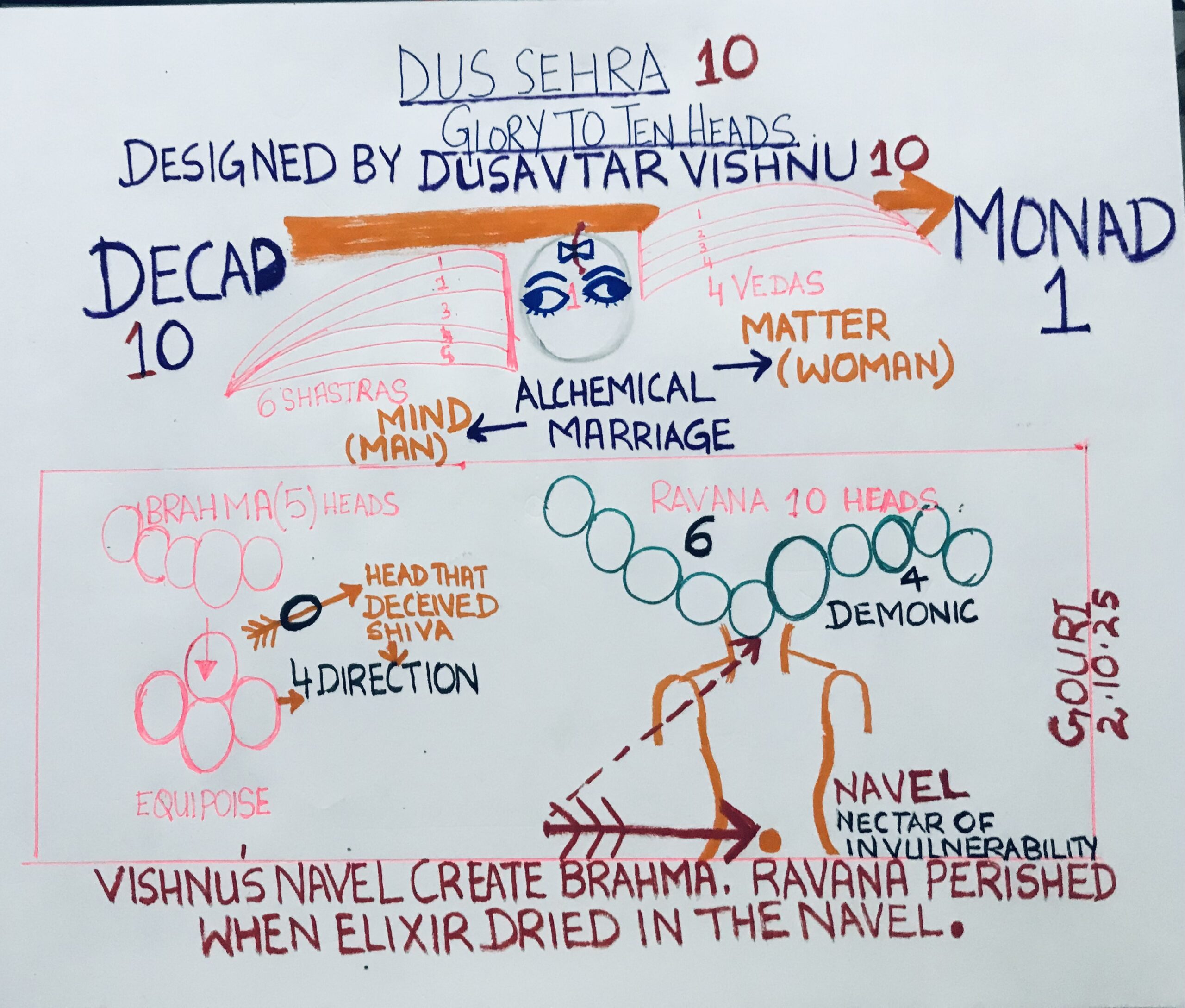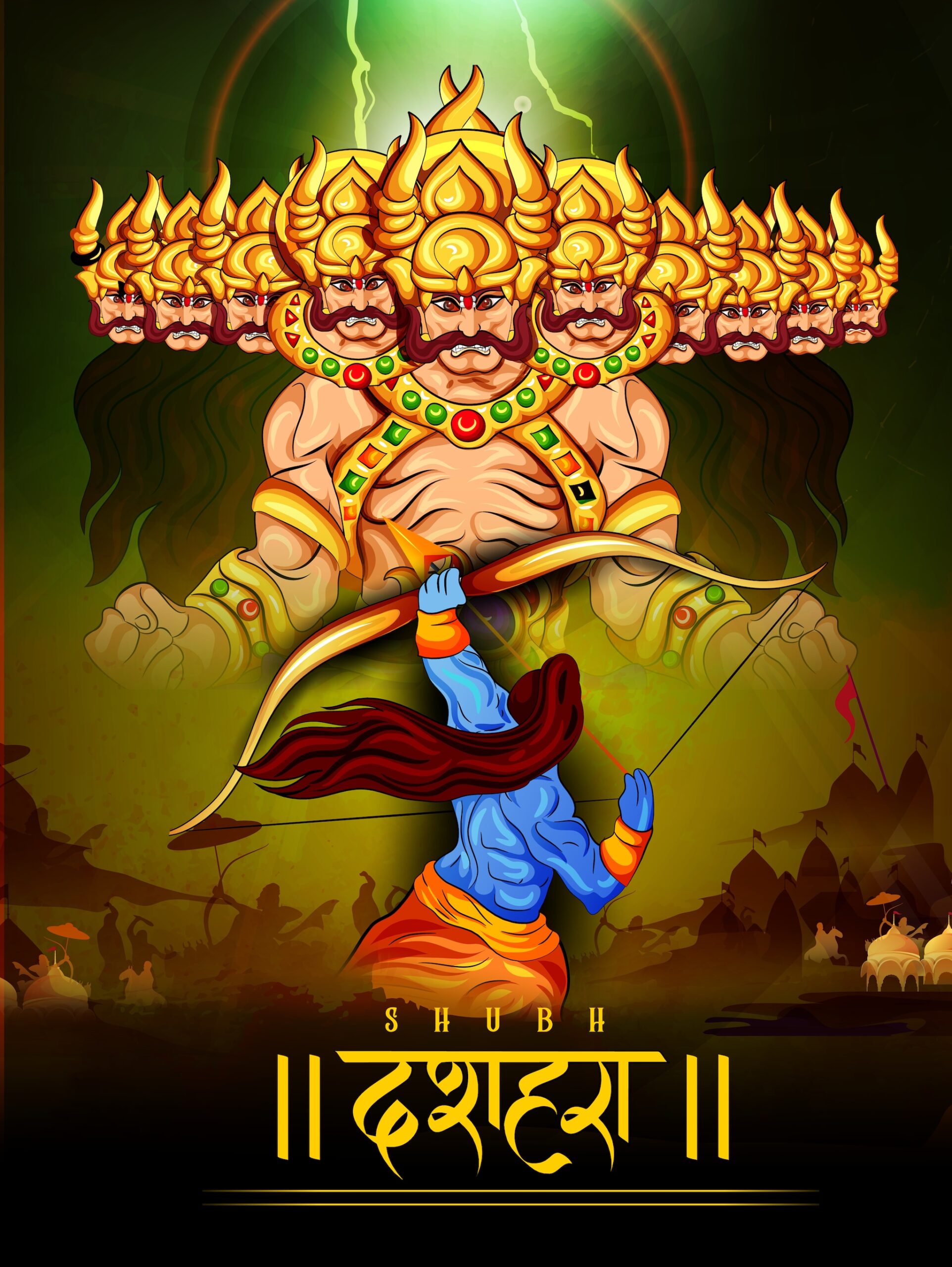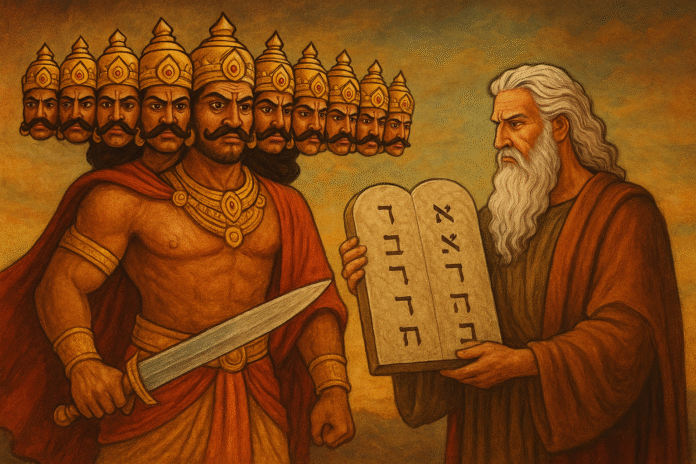The Sacred Geometry of Ten
The number 10 has always carried profound significance across cultures, philosophies, and religions. It symbolizes completeness, perfection, and transformation. The Pythagoreans described 10 as the “Decad”—the journey from the many back to the one, from multiplicity to unity. It embodies optimism, creativity, adaptability, and the ability to begin anew. Yet, when negatively manifested, it reflects pessimism, lack of confidence, and arrogance—a dangerous cover for inner emptiness.

Ravana: The Paradox of Ten Heads
In Hindu mythology, Ravana’s ten heads are more than a symbol of monstrous pride. They reflect his mastery of the four Vedas (matter) and six shastras (mind). The ten together gave him vast knowledge, intellect, and power. Yet, they also housed the flaws that led to his downfall—kama (lust), krodha (anger), lobha (greed), mada (pride), moha (delusion), ahamkara (ego), matsarya (envy), girina (hatred), bhaya (fear), and uncontrolled buddhi (intellect without humility).

What began as divine blessing from Brahma turned into the weight of duality. The “protector of heaven’s gates” became the tyrant king of Lanka, undone not by his strength, but by his inability to master his own mind.
The Symbolic Interplay of Male & Female
Ravana’s knowledge (mind/male, represented by the 6 shastras) combined with matter (female, represented by the 4 Vedas) created the alchemical marriage—the symbolic number 10. This cosmic union stands for the cycle of death and rebirth, endings and beginnings. Dussehra itself commemorates this: the destruction of Ravana not as the end, but as the renewal of dharma.
Ten Across Civilizations
- Ten Commandments: The laws defining right and wrong, when thought becomes action.
- Ten Fingers: Human tools for creation, labor, and prayer—the physical manifestation of intellect and intention.
- Emile Coué’s Self-Mastery: Through conscious auto-suggestion, man learns to shape thought into constructive reality—ten as self-control.
- Semiotic Physics: Numbers 2 and 5 (prime, odd, independent) unite into 10, initiating cycles of action and completion.
The Fall of Ravana: Ego’s Final Blow
The arrow that pierced Ravana’s navel, drying the nectar of his immortality, was symbolic—it was not mere weaponry, but a strike at unchecked ego and arrogance. Without humility and compassion, knowledge turns destructive. His ten heads made him a multidimensional thinker, his twenty arms a multitasker, but it was his inability to master oneness within that led to his core death.
Modern Reflections of Ten
- In branding and fashion, “ten heads” reflects multi-dimensional creativity.
- In health traditions, remedies like garlic-Vicks-coconut tied at the navel remind us of the gut-brain axis and the importance of balance.
- In life philosophy, ten symbolizes the tightrope between severity and joy, depending on how earlier energies are channeled.
Conclusion: Awakening Beyond the Decad
The number 10 is not merely arithmetic; it is the rhythm of life—a call to balance intellect with humility, power with compassion, and creation with dissolution. Dussehra teaches us that the destruction of Ravana is not just about burning effigies, but about burning the inner heads of ego, anger, greed, and fear.
At 5 pm on Vijayadashami, Ravana loses his existence year after year, reminding us that only self-awareness, compassion, and inner mastery can restore the true completeness of “10.”



